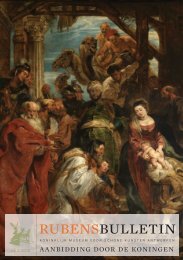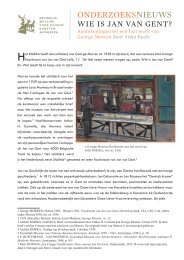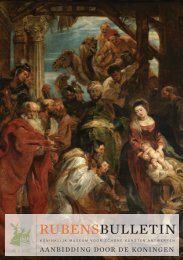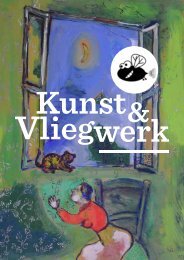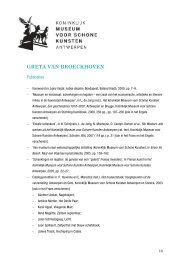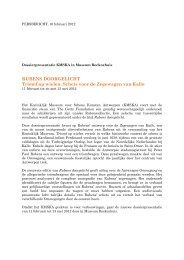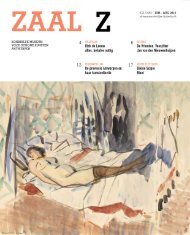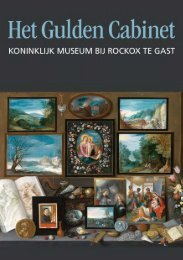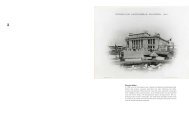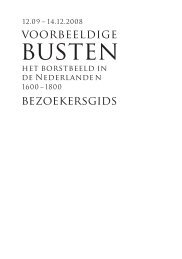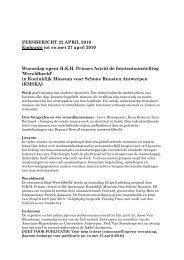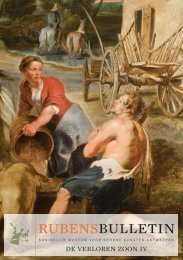visitors' guide to the presentation (PDF, 341 kB) - Koninklijk Museum ...
visitors' guide to the presentation (PDF, 341 kB) - Koninklijk Museum ...
visitors' guide to the presentation (PDF, 341 kB) - Koninklijk Museum ...
Create successful ePaper yourself
Turn your PDF publications into a flip-book with our unique Google optimized e-Paper software.
12<br />
Theodoor van Thulden, after Peter Paul Rubens, The Stage of Mercury,<br />
1639-1641, etching and engraving, Print Collection, Plantin-Moretus<br />
<strong>Museum</strong>, Antwerp.<br />
The Stage of Mercury was displayed on <strong>the</strong> Sint-Jansbrug during <strong>the</strong><br />
Joyous Entry of Cardinal-Infante Ferdinand in<strong>to</strong> Antwerp in 1635. It<br />
symbolised <strong>the</strong> flowering and decline of Antwerp as centre of overseas<br />
commerce. During <strong>the</strong> long-drawn-out war between <strong>the</strong> Nor<strong>the</strong>rn<br />
Provinces and Spain, <strong>the</strong> blockade of <strong>the</strong> river Scheldt led <strong>to</strong> <strong>the</strong><br />
decline of Antwerp’s prosperity.<br />
The central panel depicts Mercury, <strong>the</strong> god of Commerce, quitting<br />
Antwerp. He holds his staff and a moneybag in his upheld hand. It is<br />
clear that he is on <strong>the</strong> point of leaving, albeit that a winged put<strong>to</strong> is<br />
attempting <strong>to</strong> hold him back by clutching at a flap of his cloak. The<br />
scene is set on <strong>the</strong> Scheldt. While Commerce, personified by Mercury,<br />
is leaving <strong>the</strong> Antwerp, <strong>the</strong> river god Scaldis, <strong>the</strong> personification of <strong>the</strong><br />
Scheldt, lies slumbering. The female figure <strong>to</strong> <strong>the</strong> right is <strong>the</strong> city<br />
maiden Antverpia, who personifies Antwerp. On her head, she bears a<br />
city crown in <strong>the</strong> form of turreted city walls. Her posture expresses<br />
despair at her inability <strong>to</strong> prevent <strong>the</strong> god of Commerce departing <strong>the</strong><br />
city. The objects around her are also symbolic of lost overseas trade.<br />
She kneels besides an unused anchor and an upturned boat on which<br />
a sleeping seaman is resting.<br />
The scene on <strong>the</strong> left depicts Abundance and Wealth, and is a reference<br />
<strong>to</strong> Antwerp’s rich past. We see Antverpia accepting <strong>the</strong> riches<br />
from <strong>the</strong> woman beside her, who holds a cornucopia (a horn of plenty)<br />
in her hand. This woman personifies Abundance. In <strong>the</strong> adjoining<br />
niche is <strong>the</strong> allegorical figure of Comus, <strong>the</strong> god of Revelry, so apt in<br />
this scene of prosperity.<br />
(14)




